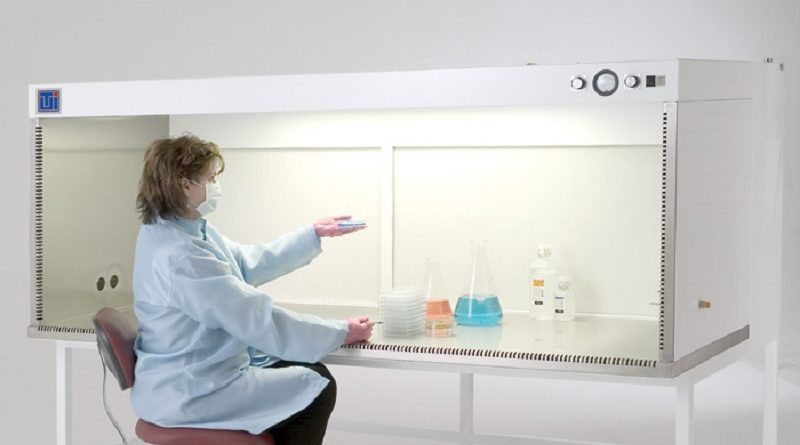Laminar flow hoods suitable for all levels of laboratory work
Cabinets that provide a clean working space use directional airflow to ensure a dust and bacteria free working zone. Air sweeps across the working area and ensures sterile conditions. Cabinet models are designed to provide working comfort as well as protection to operator and samples.
Laminar flow hoods
Laminar flow hoods, also called clean benches, provide sterile conditions in a working space by removing air contamination. This equipment has three basic components: a filter pad, a fan, and a HEPA (high-efficiency particulates air) filter. The fan draws the air through the filter that in turn traps any contamination such as bacteria and dust. The exhaust air may be expelled out of the building through dedicated ducts or filtered and recirculated in the laboratory.
Horizontal flow hoods
Horizontal laminar air flow hoods provide a steady and non-turbulent flow of air across a working space. It protects the sample from contamination but does not offer any protection to the operator. It is a preferred working area for preparing electronics components or examining non-hazardous biological tissue. But it is not a suitable space for any potentially hazardous materials such as bacteria or blood samples. But the real advantage of this set-up is that it can accommodate large laboratory equipment in a large and relatively tall working area. These types of cabinets are designed to be very energy efficient.
Vertical flow hoods
A vertical laminar flow hood draws in air through a pre-filter and then through the HEPA filter that is installed on the roof of the hood. The non-turbulent air flows over the bench and equipment and out into the laboratory. A second filter may be fitted in for more specific work that will clean the air before expelling it into the laboratory. This type of hood provides protection for both the sample and the operator. Its one disadvantage is that it is not suitable for large and tall equipment as such large obstacles may induce some turbulence over the workspace. The energy consumption of vertical air flow hoods is greater than that for the horizontal type.
Fume Hoods
A fume hood is an enclosed working space where air flow ventilates undesirable and toxic fumes away from laboratory operators. These are found in any laboratory where chemical compounds are used, from schools to research institutions. Laboratory personnel stands on the open side of the fume hood so a correct air flow into the hood is vital. The exhaust fumes should be connected to expel air outside of a building. These working benches do not offer any protection to a sample. Newer designs of fume hoods have a facility for altering the speed and direction of airflow. Fume hoods may be designed to all national and international standards of safety.
Conclusion
Laminar air flow hoods can provide clean spaces for laboratory work that requires a sterile environment. The choice of horizontal or vertical air flow, or a fume hood, depends on the nature of the work to be undertaken and the degree of protection required for both the operator and the samples.


